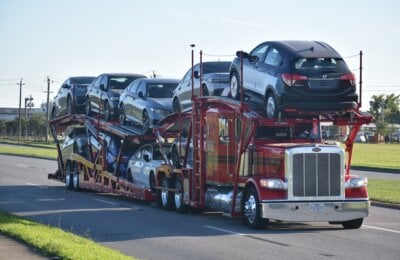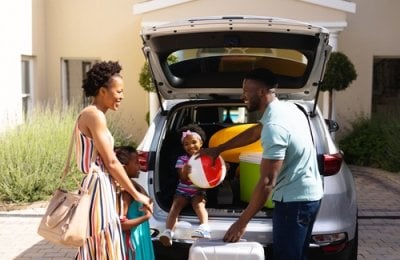
Reading Time: 10 minutes
Knowing how to spot a flood damaged car is key! Especially when cars caught in floods pop up in markets miles away from any hurricane. If you’re not a pro at fixing them, here’s what to keep an eye out for.
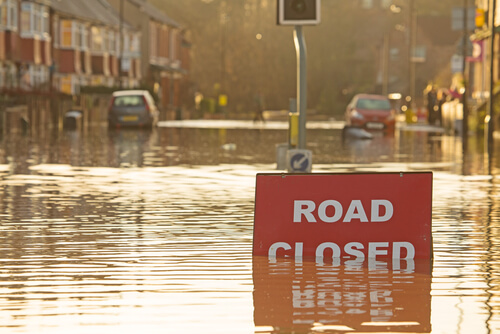
Floods are hitting harder and more often, seriously shaking up the used car market. It’s becoming increasingly crucial to know how to spot a flood-damaged car at auction. Whether you’re a seasoned buyer or a first-timer, understanding the signs of water damage can save you from a bad investment.
Cars that have been underwater for days, sometimes even weeks, often get fixed up and resold in places where folks don’t know the telltale signs of flood damage. If you’re hitting the auctions, being able to recognize a flood-damaged car is super important.
Fun Fact: It’s not just cars; boats can get damaged in the winter too. Remember to winterize them before it’s too late!
Look out for Flood Damaged Cars
Recent data shows a startling trend: Carfax reports that 378,000 flood-damaged vehicles are back on the roads, with Hurricane Ida alone responsible for potentially damaging 212,000 cars. These aren’t just numbers; they represent a real risk to buyers unaware of the dangers lurking beneath the surface.
Flood damage can wreak havoc on a car’s vital systems – from the upholstery giving off a fishy smell to critical failures in the airbags, brakes, and electrical systems. The consequences of overlooking such damage can be dire.
Of course, water is not the only way to damage a car! Bad driving, potholes, and certain habits may be harmful too. Protect your tires and rims and the rest of your vehicle by visiting our blog.
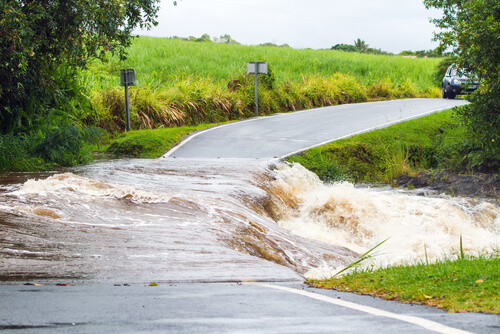
Pros and Cons of Buying a Flood-Damaged Car
Auction Practices and Prevalence
More flood-damaged cars are making their way to auctions, often far from their original flood zones. This means buyers everywhere need to be extra vigilant. Carfax’s report highlighted a surge of these vehicles in unexpected places like Indiana, proving that no market is immune.
But it’s not just about avoiding the bad. This guide will also delve into the pros and cons of purchasing a flood-damaged car. While it might seem counterintuitive, there are scenarios where buying a flood-damaged car could be a sensible choice – provided you’re fully informed about what you’re getting into.
Even if you don’t live in a traditional hurricane zone, you should be vigilant when buying a used car. More so from out of state. In fact, you should always be vigilant when buying any used car. Learn more about shipping an unregistered car.
Fixing Flood Damage
Can a flood-damaged car be salvaged? Yes, but it depends on the extent of the damage. The allure of a lower price at auction can be tempting, but you must weigh the cost of repairs against the savings. It’s legal to sell a flood-damaged car, but the key is transparency. Knowing the full extent of the damage is crucial to making an informed decision and avoiding potentially dangerous and costly mistakes.
When the price seems too good to be true, always ask: Is this car flood-damaged? Inspecting the car thoroughly before purchase is non-negotiable.
Among the pros of buying a car damaged in a flood is the price. You can often find great deals at the flood damaged car auctions, provided it makes sense to pay for the flood damaged car repairs and cosmetic fixes to hide the signs of water damage.
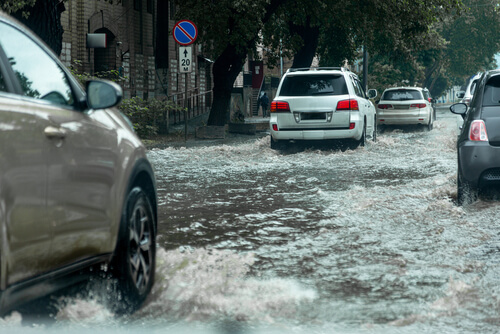
Is it illegal to sell a flood damaged car? Technically, no. Water damage may not be a deal breaker, but it can have potentially catastrophic repercussions. It is therefore important to have a clear idea of its extent before signing any contracts. That will certainly determine how much you pay for the vehicle. Armed with the appropriate information ahead of time, you can prevent potentially fatal mistakes.
Is this used car damaged by flood water?
That’s the first question to ask when the price seems too good to be true—and even if it’s not… You should ALWAYS inspect a car before you buy it.
How do you spot the subtle hints of severe water damage?
You can spot a flood damaged car in it in the equipment, lubricants, and mechanical parts. In a few months or years, corrosion caused by car flood damage can affect the vehicle’s electronic components, including airbag controllers. Consumers should inspect used cars thoroughly before they buy them (or hire a mechanic to do it for them).
Some insurance companies often do not communicate to potential buyers that a flood-damaged vehicle is a total loss. The title of a flood damaged car is supposed to be changed to a salvage title once it’s totaled. The title usually clearly states “salvage” or “flood”. In some states, this warning is shown as an obscure number or letter code.
Auto wrecks are usually sold at salvage auctions to junkyards and vehicle rebuilders. Depending on how the flood damage is disclosed on the title, it may be legal to resell these cars to consumers. Salvage title cars can’t be registered until they are repaired and inspected by officials. Once that’s done, the vehicle gets a “rebuilt” title that lets it be registered to a consumer.
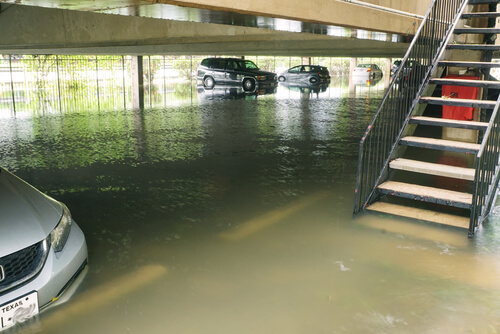
Do Your Research Before Buying Flood-damaged Cars
Consumer Reports found years ago that some flood-damaged cars with clean titles would reappear on the market. A flood damaged used car with a “lost” title or a bill of sale is especially risky.
PRO TIP: Selling a car in a flood-affected area? Even if it is in good condition, potential buyers might think that you’re selling a flood damaged car. Before you put the vehicle up for sale, have a mechanic look it over so you can give potential buyers peace of mind.
If you’re a buyer, then be sure to read this post about how you can avoid buying a “lemon” for a used car.
There are many ways to spot a flood damaged car. The following are some key things you need to consider before you buy that ‘too good to be true’ used vehicle:
1. The vehicle’s history
Make sure you do a full vehicle history check, which will help you find out whether the car is truly flooded-out. Ask the seller about any water damage too, because it’s something they might not have noticed when they put the car up for sale.
Consumers can run background checks through the National Motor Vehicle Title Information System, which provides consumer information about vehicles. In states with lax regulations, “title washing”, where cars that have been totaled (or stolen), receive clean titles, is cracked down on by this system.
A vehicle might not get a salvage or branded title if the owner didn’t have comprehensive insurance or a certain level of repair costs weren’t exceeded.
Carfax offers a free flood damaged car report in addition to its vehicle history reports. By checking the title and area history, and the registered address for the vehicle at the time, the “possibility of flood damage” can be determined.
The National Insurance Crime Bureau offers VINCheck, a free service that searches vehicle identification numbers, although it does not use as many sources as some paid services.

There is no guarantee that a vehicle has no problems, but vehicle history reports are a valuable tool for screening potential vehicles. A detailed inspection is ultimately the best protection for a consumer.
2. Check your lights
A car’s interior can be concealed relatively easily, but its electrical systems, which will exhibit signs of water damage in the wake of flooding, are much harder to mask.
Inspect the car’s lights, which may still have visible water lines suggesting flooding, before examining any electronic components, such as the windows, to ensure they work properly. There may be fog inside headlights or taillights, and muddy or damp areas around overhangs or inside wheel wells, for example. Water lines are often visible in the engine compartment or trunk indicating that the car sat in standing water.
When trapped water is present, the heating system may also create excess condensation. The moment your windows start fogging up, it’s time to ask those hard questions.
3. Check under the hood
You can find a lot of information about a car’s secrets under its hood, so make sure you check for any rust or corrosion. Excess rust elsewhere on the vehicle—particularly if it isn’t old—is also a key giveaway, so give the entire car a thorough once-over, and if you’re unsure of anything, consult a mechanic to advise you further.

4. Look for loose objects
The car might have parts that aren’t there you’d expect, which might be an indication that it hasn’t been serviced. If the seats have been removed to dry out carpets and there are no rubber drain plugs under the car, that’s a sure sign of water damage. If you spot any of these red flags, proceed with caution.
Check the seat-mounting screws to see whether there’s any evidence that they were removed. To dry the carpets effectively, the seats must be removed and possibly even replaced. Look at the heads of any unpainted, exposed screws under the dashboard. Bare metal will show signs of rust in flooded cars.
Make sure the rubber drain plugs under the car and on the bottom of the doors look like they’ve been ripped out recently. It might have been done to drain floodwater.
Smell, Sound, and Touch Inspection
When inspecting a car for flood damage, your senses are powerful tools. Here’s how to use smell, sound, and touch effectively, based on the latest insights and methods:
Touch and Feel:
Check the car’s interior for dampness in carpets and seats. Even if the upholstery has been replaced or cleaned, remnants of dampness can linger.
Feel for soggy spots. Water damage often leaves behind a distinct wetness that’s hard to completely eliminate.
Look for staining or color differences in the upholstery, particularly between lower and upper sections. This can indicate standing water.
The Sniff Test:
Be aware of musty odors. Flood-damaged cars often have a distinctive mildew smell that’s difficult to remove entirely.
Conduct two specific tests for odors:
First, turn off the car and close all doors and windows for several minutes, then check for unusual smells.
Second, turn on the air conditioning and heating system and note any musty odors that may indicate past flooding.
Listening Carefully:
Pay attention to unusual noises when the car is running. Flood damage can affect the engine and other mechanical components, leading to abnormal sounds.
Visual Inspection for Rust:
Check for rust on metal areas underneath and inside the car. Look at the seat frame, car floor bolts, and seat tracks for signs of corrosion.
Other Important Checks
Stained or discolored carpeting can be a giveaway. Look for splotches, tone differences, or faint watermark lines.
Look for consolidated dirt and sand, particularly around interior and exterior surfaces, as this could indicate past water exposure.
Remember, even if a seller has tried to cover up flood damage, these methods can help you uncover the truth. For more detailed information and helpful tips on spotting flood-damaged cars, check out the comprehensive guides from CarMax and Chase, which delve into identifying such vehicles and what to do if you inadvertently purchase one.
Table: Key Inspection Points for Flood Damage Detection
| Inspection Point | What to Look For |
|---|---|
| Interior Dampness | Soggy spots, dampness in carpets and seats |
| Odor | Musty smells, especially when AC is on |
| Rust and Corrosion | Rust on seat frames, floor bolts, and seat tracks |
| Carpeting | Stains, discoloration, watermarks |
| Consolidated Debris | Dirt and sand around interior and exterior surfaces |
| Unusual Noises | Sounds from the engine indicating mechanical damage |
Use these tips and the table as a guide when inspecting a vehicle for flood damage. Remember, your senses can be some of the most effective tools in identifying potential issues.
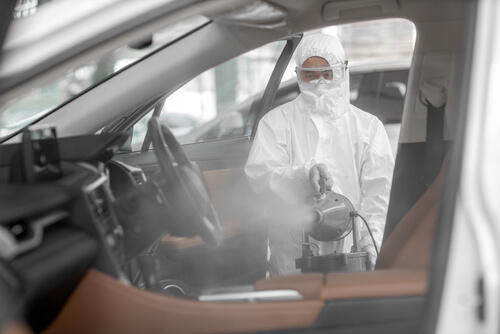
6. Do some digging
Look for dirt and debris in difficult-to-clean places, such as between the panels in the trunk and under the hood. Areas that are commonly affected include the areas around the seat tracks and the upper carpeting under the glove box. A mechanic should check for caked mud or grit around wiring harnesses, in alternator crevices, and around starter motors, power steering pumps, and relays.
Usually, grime does not settle at the bottom edges of brackets or panels. Rust and flaking on the undercarriage should not be evident on a newer vehicle.
Know of a Flood Damaged Car Sold As New? It’s Probably FRAUD!
If you suspect that an auto dealer in your area is committing fraud by passing off flood-damaged or salvaged vehicles as undamaged ones, you should contact your auto insurance company, local law enforcement or the National Insurance Crime Bureau (800-835-6422).
Whenever possible, the best advice for avoiding flood-damaged vehicles is to remember the old adage: If a deal sounds too good to be true, it probably is.

Can a flood damaged car be fixed?
Remember that if you do find flood damage, you should consult with a mechanic before making any final decisions, and ask for proof that the car has been repaired. If you spot too many flood damage warning signs, walk away. Flood damage doesn’t always have to be a deal breaker, but it’s a good idea to learn the warning signs and walk away if necessary.
There are many ways to ship a vehicle, including towing it, or putting it on a car dolly. However, it is safest to use a car shipping company that specializes in shipping cars with salvage titles. In most cases, you will be able to choose from the following options:
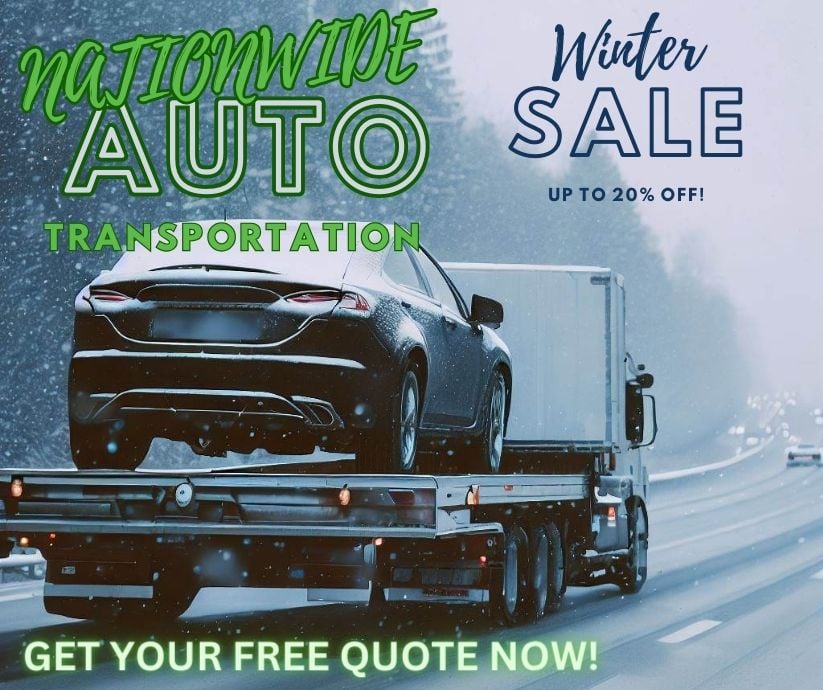
- Open car carrier
- Enclosed auto shipping
- Door-to-door shipping
- Terminal to terminal auto transport
Of course, it’s not only water damage that can ruin your car… Learn about other ways in which car damage can be inflicted, including bad driving habits and driving across the country unnecessarily.
Don’t let the excitement of a car auction blind you to flood damage. Learn what to look for before you bid. Nationwide Auto Transportation makes shipping your auction finds easy.
Get a free quote and experience reliable car transport!

